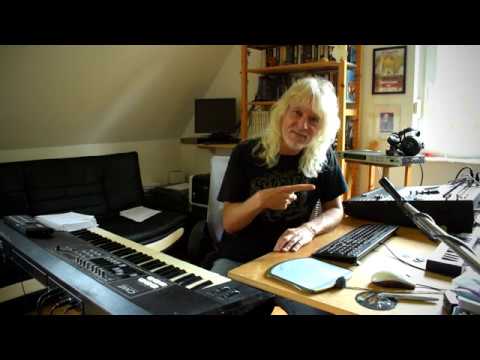
SSX 3 opens by following a helicopter as it courses between the peaks of a snowy mountain. It hovers above a powdery slope and whoever you’ve selected from the game’s colorful cast drops down into it. The sky is blue, the snow is crisp white – even 18 years later, SSX 3 still feels amazing to just exist in. A voice cuts through the motivating electronica playing in the background “you’re listening to EA Radio BIG.”
That’s DJ Atomika – the actor for which, Mark Hildreth was part of NXIVM, which has made me less fond of him over time – he’s your “eyes and ears” for the SSX event. He just got word that the SSX competitors have started to arrive and that means things are about to get exciting. “Must be pretty nice – doing what you want, going where you please.” He remarks after pointing out that events might take a while to begin if you and the others decide to stop off at the lodge or go explore the mountain for a bit.
Within these first 30 seconds SSX 3 has made two things abundantly clear:
- Do whatever is interesting to you at whatever pace you want.
- Everyone is thrilled for you to be here.
Oh, and:
3. you’re on a snowboard.
That last bit should be obvious, though, right? SSX is about snowboarding, it’s the mechanical throughline for the whole series. Hell, SSX even stands for- …hang on I think I actually need to Google this. “Snowboard, surfing and motocross.” Huh. Okay, well, my point is that every SSX title since the 2000 original has involved barreling through the snow, catapulting into the air, and making shapes in the most stylish way possible.
But I don’t care about snowboarding, so it’s lucky that snowboarding isn’t what SSX 3 is about, not really. More than anything, SSX 3 is about vibes. To some extent, this is true of all SSX games. While the series mechanics mostly remain the same with each new iteration, the biggest changes tend to be stylistic.
The most obvious example of this was how SSX Tricky followed up the original game’s grit and garage music with a vibrant and energetic take on disco aesthetics. Tricky went for maximum flamboyance all of the time, with a wild cast of characters propelling themselves through over-the-top courses as the same sample of Run-D.M.C. erupts for every excessive trick. Tricky wants you to think it’s cool, and it lands that ambition with an all killer no filler approach.

SSX 3 isn’t that. Compared to SSX Tricky, it’s not as saturated, not as focused. The two sibling games might play almost the same but there is generally a divide between people who love SSX Tricky and people who love SSX 3. This is for good reason: experientially, they might as well be completely unrelated games.
If SSX Tricky is a party with the cool kids that you’ve been lucky enough to get invited to, SSX 3 is a party that’s been going on for a while and that everyone is psyched to see you’ve arrived at.
See, SSX 3 doesn’t have an ego in the way that other games in the series do. SSX On Tour’s grunge/punk aesthetic wants to impress you like a kid scratching a ‘cool S’ into a school desk, but SSX 3 could almost be described as neutral by comparison. I wouldn’t go as far as to call it understated (you’re still catapulting yourself 80ft into the air and pulling off impossible moves) but SSX 3 cares so much more about being inviting than being cool.
For a start, SSX 3 trades the over-the-top courses of Tricky for a cohesive, connected game world. A huge, continuous mountain full of events and characters.
For many, it’s this transition to a seamless open mountain that began the series’ perceived decline. I’ve seen people make the case that, for a game in which you’re constantly tearing downhill, free roam does nothing but add busywork. Diluting the gameplay with meaningless journeys from event to event. I think there’s validity in this perspective, but it’s one that ignores what’s gained from this connectivity: a sense of there being a world that exists without you. It is this wider festival atmosphere that makes your steady rise through the ranks of the SSX circuit feel so rewarding and unlike anything else in the series.

DJ Atomika will shout you out in gaps between the game’s incredible selection of licensed tracks, charting your meteoric rise after each new victory. Other boarders will approach you after races to see if you want a cheeky one-on-one competition in the out-of-bounds areas. Riders will bellow taunts at you during races, referencing playful rivalries between the cast.
It’s this aspect that I think has resulted in such a strong fanbase of people like me who just… can’t let SSX 3 go. Despite two mechanically direct sequels in SSX On Tour and SSX Blur, it somehow feels more contemporary than either of them, being the only sixth-generation SSX to be made backwards compatible on newer Xboxes.
These sequels can’t be faulted for lack of trying either. SSX On Tour took a second swing at an open mountain (if you ignore the PSP version, which by the way was a fantastic port). SSX Blur had the open mountain and even brought DJ Atomika back, but just didn’t stick the landing the same way 3 did.
Even outside of the series, Xbox 360 launch title Amped 3 arguably had the best open world snowboarding since SSX 3 and Ubisoft’s open world snowsports game Steep leant hard into the sort of festival aspects that SSX 3 theoretically thrived on. Remember, though, this isn’t about snowboarding, this is about vibes.

Burnout Paradise was developed with the exact same philosophy of a connected, inviting world for players to prod at, at their own pace. It was, for all intents and purposes, SSX 3 with cars. I don’t know for sure that the games shared development staff but if I had to put money on it I’d say they did. The DNA of SSX 3 is coursing through it from the spontaneous challenges, to the way that moving around the world is just FUN. DJ Atomika is even back in his, as far as I’m aware, only non-SSX appearance.
That same inviting festival atmosphere is back, manifesting across genre lines. It’s this that makes me convinced that SSX 3 was more than a snowboarding game, it was the foundation for an entire style of game design.
Forza Horizon 5 is mere months away, the latest in Playground Game’s sublime line of open-world driving games. Like SSX 3, the Horizon games are often most adored by people who never expected to enjoy them. ‘Horizon’ is a declaration of intent, a way to distinguish the series from the mainline ‘Motorsport’ games, which have far more of a focus on realistic driving models and specific tracks from around the world.
This distinction is not unlike the EA Sports’ ‘BIG’ sub-label that SSX 3 was published under. Despite its driving systems using the same bones as Forza’s more grounded counterpart, Horizon is about freeform fun, and playful spectacle. Forza Horizon doesn’t care if you understand the inner workings of its cars. It doesn’t care if you’re good at racing. It’s happy for you to spend your time however you would like at whatever pace best suits you. Horizon, more than anything else, just wants you to know that it’s excited for you to be in its world.
I can think of no better torchbearer for the legacy of SSX 3 than that.
Dan Pearce is a game designer best known for Ten Second Ninja X and the BAFTA-nominated Castles in the Sky.
The post ‘SSX 3’’s vibes are the reason we got ‘Burnout Paradise’ and ‘Forza Horizon’ appeared first on NME.






